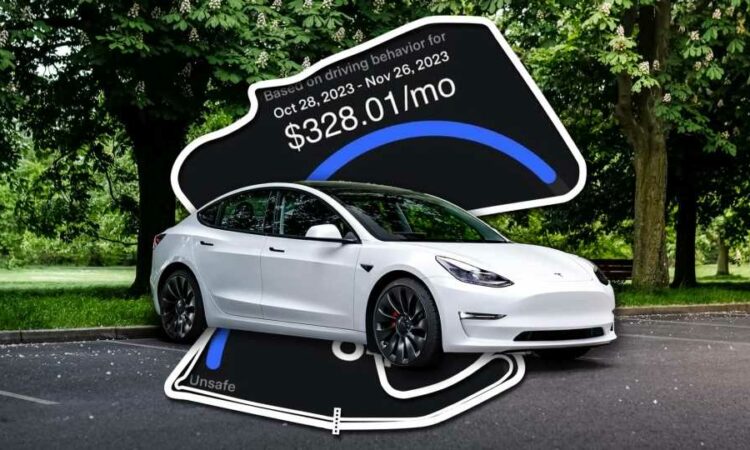If you’re looking to take your brand new performance-trimmed Tesla Model 3, Y, S, or X out to the track and you also have Tesla’s insurance product, you might not want to.
As it turns out, whipping Tesla’s flagship performance cars around on a designated racetrack, even with Track Mode enabled, will punish drivers by reducing their safety score. As a result, those reduced scores count directly against a driver’s premium, instantly jacking up the price drivers pay each month to keep their car insured directly through the automaker.
Tesla owner Jeffrey Jacobs recently learned this the hard way after he took his 2021 Tesla Model 3 Performance to a track safety and cornering course at Dominion Raceway in Woodford, Virginia. Jacobs switched his car into Track Mode—something he does any time that he’s tracked his car—and began his day on the course. But after finishing up his day, he noticed that his safety score had plummeted from 99 to 84, resulting in a premium increase of almost $158 per month for that single track day.
“I would expect the car to be aware of the fact that I put the car into Track Mode, which I made sure to do every time I got on the track,” Jacobs told InsideEVs. “I would have expected Tesla not to track my safety score on the track.”
As it turns out, this is something that some Tesla Insurance owners ended up figuring out the hard way for some time. Owners have posted similar experiences of tracked cars being dinged for FSD Beta’s safety score in the past, but owners could simply soft reboot their cars by holding down the scroll wheels on their steering wheel before parking the car and the drive wouldn’t be counted against their score. It appears that Tesla has since patched that and it now directly affects the score even if the car is rebooted.
With Tesla being a software-centric automaker, it’s surprising that the automaker doesn’t have a solution for this already. For example, implementing a GPS-based system that tracks if the car is in the proximity of a racetrack and allows the owner to toggle the safety score (and potentially coverage) on or off based on their intended usage. Nissan had a similar approach to removing the speed limiter on the Nissan GT-R back in 2007, so it feels quite possible for Tesla to offer something comparable almost two decades later.
Most insurance companies won’t cover a car that is damaged when taking it out to a track day, or participating in an organized contest of speed. This is where specialty insurance would kick in should some accident occur. It’s not clear if Tesla’s insurance product covers on-track use, as its policy documents aren’t available online, however, Jacobs says that he was not able to locate anything in his coverage documents that matched the words “race” or “track.” Given that Tesla’s limited vehicle warranty explicitly does not cover “competition, racing, or autocross” events, and most other typical on-road insurance products don’t cover racing, it’s likely that Tesla’s insurance product does not cover it as well. Unfortunately, we were unable to confirm this with Tesla as the automaker shuttered its PR department some time ago. We were not able to reach anyone at Tesla’s insurance department by phone and Tesla did not respond to any emails requesting its coverage documents at the time of writing.
“[If] I had an accident on the track, I would be surprised if Tesla covered it. I was very careful on the track so as not to for just that reason,” said Jacobs, acknowledging that he did not expect Tesla to cover any on-track accidents. “And that’s the rub, if I don’t expect Tesla Insurance to cover my track time, why are they allowed to rate my driving based upon that experience?”
Look—it’s no secret that Teslas are already expensive to insure. Heck, when I moved from a Honda Accord to a Tesla Model 3, the initial quote for my premium was almost triple what I had been paying for years.
Tesla’s insurance product is a seemingly good offering for drivers who want a lower premium and are okay with Big Brother watching and scrutinizing every pedal press and steering wheel turn. But it also encourages drivers to blow through yellow lights to avoid slamming on their brakes and penalizes them for driving at times when Tesla’s superchargers have less congestion and cost less to use. And according to a report from Reuters, it’s turned out to largely be a flop for those who end up needing to make a claim.
The overlap between Tesla owners and those who plan to track their car is already admittedly small, and if Tesla’s insurance coverage does not cover these drivers on track days, why penalize them for bombing their car around Laguna Seca like they stole it?
Source: Read Full Article

